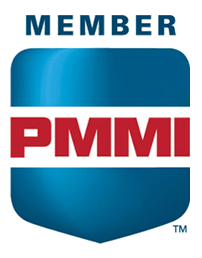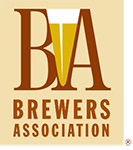Orienting
Orienting pucks: Many companies will run products on a puck to allow for more stability as product runs down the line. Morrison can orientate the pucks so they have a consistent location as they discharge the screws. Notice how the pucks are fed with random orientation, but are always discharged with uniform orientation. The pucks have a locating lug (flat section) that allow the spring loaded rails to spin the containers until the flat is locked in a consistent position
Servo Dip Tube Orienter: The customer was having a lot of complaints from customers on one of their aerosol lines. Customers were getting down to the bottom of the cans and still noticing there was product left inside the can, but were unable to get all of the fluid out of the container. To guarantee the customers would get the required fluid oz. out of the container, the plant was actually overfilling the containers (for example, if the can says it has 9 fl. oz. in the container, they filled it up to 11 fl. oz.) Even though this should have given the customer enough product, they still had unhappy customers because product is left in the containers.
Morrison was brought into the project to orient the dip tubes so that they are located in the proper position to extract the entire product out of the containers. The dip tube needed to be oriented so that it matched the location where the trigger sprayer is. The containers are controlled by a timing screw throughout the entire system. The orange light on the infeed of the machine is a vision system (single camera) to inspect the location of the dip tubes to the orientation mark. The camera communicates with all 10 heads and each head is capable of individually rotating up to 180 degrees in either the clockwise or counterclockwise direction to line the two orientation marks up. After the containers pass through the orientation heads, there is a second camera to inspect for any rejects. If there are any containers that did not have the dip tubes oriented properly, Morrison has a vacuum star reject station to pull off any unoriented dip tubes.
Container Inspection Rotary Orientor: There are many reasons why companies require consistent orientation of product on automation lines: consistent labeling, filling applications, packing applications, inspection systems, etc. Each company may be dealing with a different orientation requirement, but Morrison’s rotary orienter is flexible and can accommodate most orientation needs. Through inspection of some fashion (sensor, camera, vision, etc.) Morrison can accept containers and orient them into a consistent location. Rectangle containers can be oriented either 0 or 180 degrees, and square containers can be oriented 0, 90, 180, 270 degrees. A main feature/advantage that the GH300 offers is smooth orientation of the product. When looking at the back side of the machine notice that the containers are slowly rotated into the correct location so that each of them are in consistent orientation when discharging out of the machine. Many other orienters in the market place are very jerky and aggressive, leading to less efficient equipment (more jams, more wear parts, higher down time, etc.)
Orienting Offset Neck/Handles: Many containers have features that call for appropriate orientation as they go through different stations within production. This particular application is for a Clorox bleach container that has an offset neck. Before the container is filled, proper orientation is needed. Morrison controls the product with a timing screw and specialty railings, which mechanically orientate the containers so that the offset neck is in a consistent position as it travels through the filling station.
Value Packed Rotary Orientor: These two videos are the same systems, but just different sizes. These machines were installed just upstream of a sleeving application. Morrison was responsible for orienting the containers so that the tab is located in the proper location for the sleeve to be applied. It was a very important to Wrigley that the label/sleeve was located in a consistent location to the tab/cap of the container. If you look at the infeed of the system, the lids of the containers are coming in with random orientation. When the container travels around the main turret, Morrison utilizes the geometry of the cap/container to lock the containers in a consistent location.










